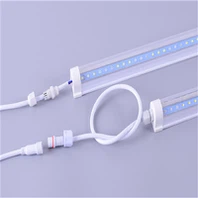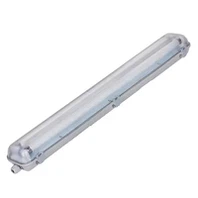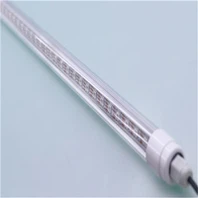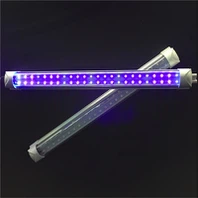Is Photosynthesis Supported by LED Lights?
The natural light source that has supported terrestrial vegetation for billions of years, sunlight, is frequently linked to photosynthesis, the process by which plants transform light energy into chemical energy to drive development. But as cities grow, indoor gardening becomes more popular, and farming methods move toward controlled settings (like vertical farms), the issue is raised: Can artificial light sources like LED lights promote photosynthesis? Yes, without a doubt, however the efficacy hinges on knowing how plants use light, LED characteristics, and meticulous lighting condition tuning. In order to investigate this, we must first dissect the fundamentals of photosynthesis, then look at how LEDs fit into plants' light needs, and then discuss practical uses and issues.
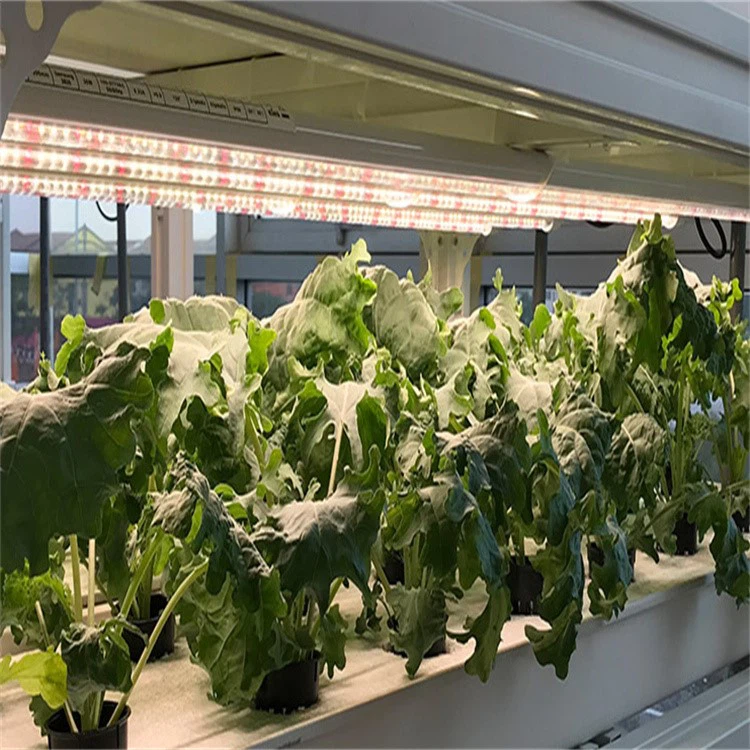
The ability of plants to use pigments like carotenoids, chlorophyll a, and chlorophyll b to absorb particular light wavelengths is the fundamental component of photosynthesis. The principal pigment, chlorophyll a, is most effective at absorbing light in two wavelength ranges: the red spectrum (600–700 nm) and the blue spectrum (400–500 nm). Carotenoids absorb blue-green light and shield plants from light harm, while chlorophyll b enhances this by absorbing a little more blue and some orange light. The reason leaves appear green to the human eye is because plants consume very little green light (500–600 nm), with the majority of it being reflected. Although the entire visible light spectrum is provided by sunlight, plants only use the blue and red portions, which are referred to as the "photosynthetically active radiation" (PAR) range. This crucial realization is essential to LED technology: even without reproducing the full spectrum of the sun, LEDs may be able to facilitate photosynthesis if they can emit light in the red and blue PAR areas.
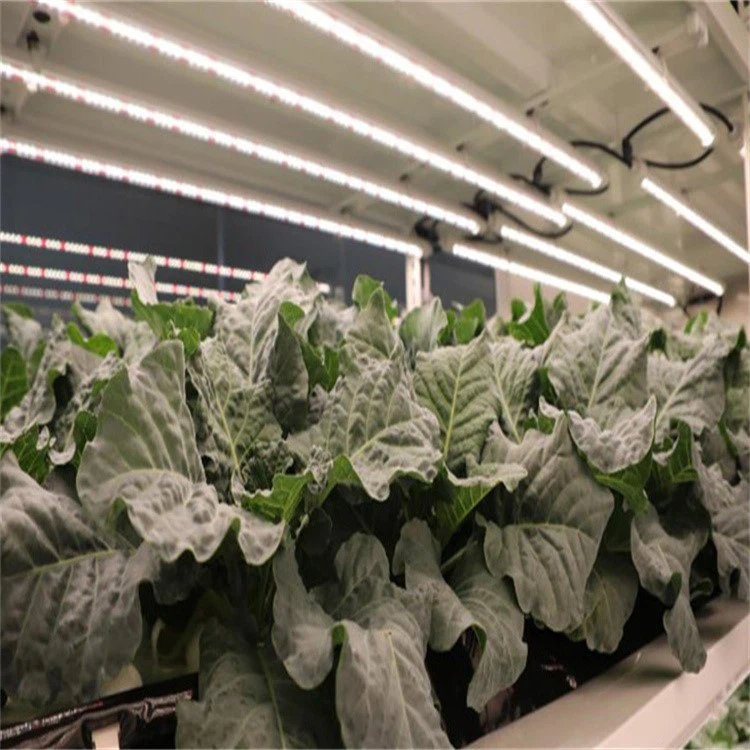
LEDs are particularly well-suited for photosynthesis because of their exceptional ability to target particular wavelengths. LEDs can be designed to emit narrow bands of light exactly in the blue and red ranges, in contrast to fluorescent tubes (which emit some PAR but also unneeded green and yellow light) or incandescent bulbs (which emit broad-spectrum light but lose most energy as heat). High-efficiency blue LEDs, for instance (which use InGaN semiconductors, as was previously mentioned), emit light at 450–470 nm, a wavelength that is easily absorbed by chlorophyll a and b. At 660–670 nm, which is also another peak absorption range for chlorophyll a, red LEDs, which are usually composed of aluminum gallium arsenide (AlGaAs) or gallium arsenide phosphide (GaAsP), emit light. Growers can produce a "custom" light spectrum that meets the photosynthetic requirements of their plants by combining blue and red LEDs in a certain ratio, usually 1:3 to 1:5 blue-to-red, depending on the variety of plant. LEDs are up to 80% more energy-efficient than incandescent bulbs, which is a huge benefit for indoor farming where lighting costs are a key expense. This focused approach not only guarantees that plants receive the light they require but also minimizes energy waste.
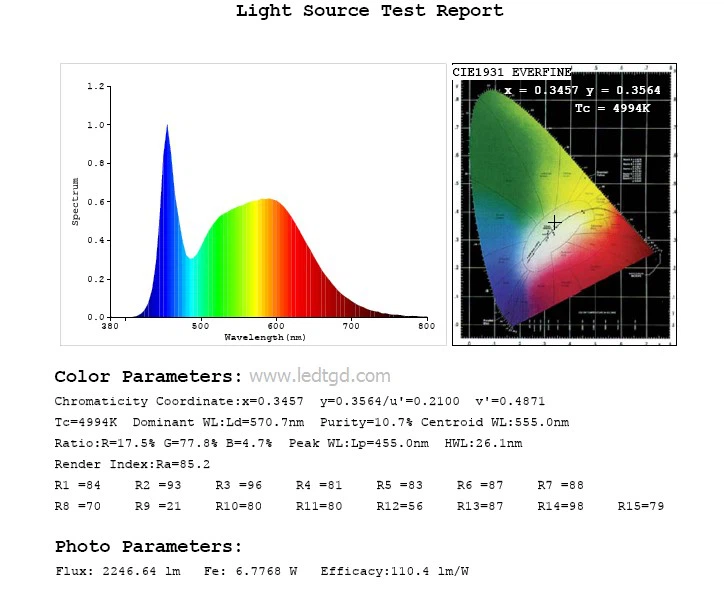
The ability of LEDs to promote photosynthesis-and in certain situations, surpass natural sunlight-has been consistently verified by scientific studies. A 2018 study comparing the growth of lettuce under red-blue LED lighting to sunlight was published in Scientia Horticulturae. According to the findings, lettuce cultivated using LEDs had 20% more biomass (total plant weight) and more antioxidants than lettuce produced in the sun. This is due to the fact that LEDs give exact control over the spectrum, duration, and intensity of light-all of which are varied in natural settings. For example, photosynthesis is slowed down on cloudy days when sunlight intensity decreases. Growers can use LEDs to maintain a constant light level (measured in micromoles per square meter per second, or μmol/m²/s) that is ideal for the stage of growth of the plant. The "photoperiod," or number of hours of light each day, can also be changed. For example, leafy greens like spinach require 12 to 16 hours of light to flourish, whereas flowering plants like tomatoes require shorter photoperiods to initiate blooming. In vertical farms or grow tents, LEDs maximize light absorption and space efficiency by producing less heat than other light sources, allowing them to be positioned closer to plants without burning their leaves.

Because LEDs are tunable, they can be adjusted to meet the different light needs of different plant species. Since their growth is centered on the development of their foliage, leafy vegetables (lettuce, kale, and spinach) require blue and red light above everything else. A straightforward red-blue LED arrangement is adequate and reasonably priced for these plants. However, adding tiny amounts of green or far-red light (700–800 nm) to the lighting may help plants that bloom and bear fruit, such as tomatoes, peppers, and roses. For instance, far-red light aids in controlling "photomorphogenesis," or how plants respond to light by growing things like stem length and flower commencement. 10% far-red light added to a red-blue LED spectrum enhanced tomato fruit yield by 15% by encouraging blossom formation, according to a 2020 study published in Plant Physiology. LEDs can help even low-light-loving plants, such as common houseplants like pothos or snake plants, which can survive in spaces without natural sunshine thanks to a low-intensity blue-red LED lamp that can offer enough PAR to keep them healthy. Because of their adaptability, LEDs are not only perfect for industrial farming but also for home gardeners who want to cultivate houseplants or herbs all year round.
Even though LEDs are quite good at photosynthesis, there are a few things to keep in mind to get the most out of them. First, light intensity must be appropriate for the demands of the plant. For example, adult plants may require 400–600 μmol/m²/s for maximum growth, while seedlings require lower intensity (100–200 μmol/m²/s) to prevent stress. As the plant ages, farmers can change the intensity by using LEDs that have dimming capabilities. The second crucial factor is the spectrum ratio: too much red light might result in weak, lanky plants, while too much blue light will impede growth (thin leaves, short stems). It's crucial to test various ratios for each species, such as 1:4 blue-to-red for lettuce and 1:3 for tomatoes. Third, heat management-high-power LEDs, which are utilized in commercial farms, can nevertheless produce heat that impacts plant temperature and LED lifespan, despite the fact that LEDs emit less heat than traditional bulbs. LED fixtures can avoid overheating by adding fans or heat sinks. Lastly, even though energy expenses are lower than those of incandescent or fluorescent lighting, they can still mount up for large-scale businesses. Long-term expenses can be decreased by selecting high-efficiency LEDs, which are measured in lumens per watt (lm/W) or PAR per watt (μmol/J).
The rise of indoor agriculture and vertical farming is already evidence of the practical effects of LED-supported photosynthesis. Thousands of red-blue LEDs are used by businesses like Plenty and AeroFarms to grow leafy greens in cities, consuming 95% less water than conventional farming and yielding year-round crops. LEDs make it possible to produce food locally in areas with extreme temperatures, like the Arctic, where sunshine is sparse for months at a time, lowering need on imported vegetables. NASA's studies to create food systems for extended space travel (such as journeys to Mars) also use LEDs to grow plants in controlled conditions. On a smaller scale, home growers transform gloomy areas into fruitful gardens by using LED grow lights to plant vegetables, herbs, and microgreens in basements or apartments. These uses show that LEDs are a revolutionary technology that broadens the range of places and methods in which plants can be grown, in addition to being a practical substitute for sunlight in photosynthesis.
To sum up, LED lights can undoubtedly aid in photosynthesis, and they can do so more effectively, precisely, and versatilely than many conventional light sources. LEDs give plants the precise light they require for photosynthesis by emitting certain wavelengths in the red and blue PAR ranges. Growers may also modify the spectrum, intensity, and duration of the light to suit different plant species and growth stages. LEDs can increase plant growth, yield, and quality, according to scientific studies and practical applications (such as home gardens and vertical farms). Although there are factors to take into account, such controlling heat and maximizing light intensity, these can be readily resolved with careful design. LED technology's contribution to photosynthesis will only increase as it develops further (in terms of cost, efficiency, and spectrum tuning), opening the door to more accessible, productive, and sustainable agriculture in the future.
FAQs
Q1. How Can I Get This Samples?
A1: Hi, easy for this.give me your address and tell me which item you need,we will arrange sent to you by DHL or FedEx.
Q2:How About Your Quality?
A2: All raw material with top quality to ensure high luminous and enough brightness.
Q3:What About The Lead Time?
A3:Sample needs 3-5 days, mass production time needs 25-40 days after receving the deposit
Shenzhen Benwei Lighting Technology Co.,Ltd
Telephone: +86 0755 27186329
Mobile(+86)18673599565
Whatsapp :19113306783
Email:bwzm15@benweilighting.com
Skype: benweilight88
Web: www.benweilight.com

